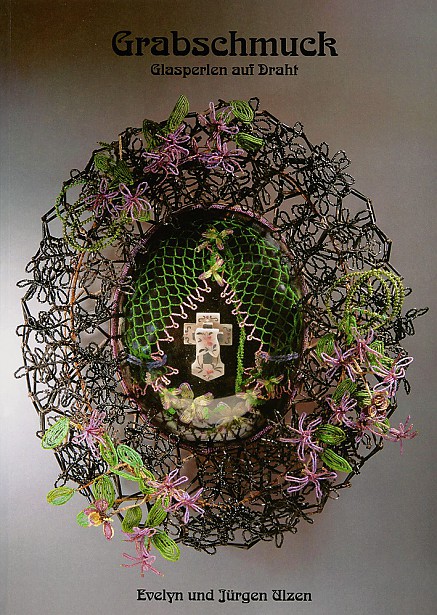20. September 2008 – 16. November 2008
Cabinet Exhibition
Wreaths of pearls from the Ulzen family collection
On the third weekend in September, the Day of the Cemetery takes place in many communities throughout Germany. In order to raise public awareness of the cemetery as a place of burial and cultural space it was created in 2001.
In Kassel, the Day of the Cemetery is celebrated at the same time as the 165th anniversary of the main cemetery on September 21, 2008. The fact that cemeteries nowadays advertise because more and more people choose alternative forms of burial is astonishing about this.
From September 20 on, the Museum of Sepulchral Culture will present the special exhibition "Forbidden grave decoration – pearl wreaths from the Ulzen Collection". The exhibition concerns itself with the day of the cemetery and its intention in the sense that it highlights why people tend to turn their backs on classic cemeteries more and more. The strict regimentation, which is reflected in the design rules and prohibitions of certain things, has led many people to choose burials outside the cemeteries. The beaded wreaths, which were popular at the end of the 19th and beginning of the 20th century, did not correspond to the aesthetic sensibilities of cemetery experts and were therefore banned.
The grave decoration made of pearls is a shining relic of burial cultures from the past. For one hundred years it determined the face of mainly Roman Catholic cemeteries. Émile Zola described its effect as a gentle glow that welcomed visitors. Starting in Italy and France it was then found in southern Germany, Alsace and Lorraine, Switzerland, Austria, Denmark and Spain from the middle of the 19th century forward.
Filigree curved pearl wires, angels and Christian symbols, an anchor as a symbol of hope. Since the middle of the 19th century, ornaments made of glass beads served as decoration on the graves. Every year on All Saints' Day and All Souls' Day the lovingly handmade wreaths were brought back to the cemetery. However, in the first half of the 20th century, towns and communities turned against this form of funeral culture and banned the beaded wreaths in their cemeteries between 1930 and 1950. The director of the Royal State Trade Museum described the handmade grave decoration as "abominations of the most banal form". He did not recognize their beauty and grace. In spite of the prohibition, individual graves of surviving dependents were still decorated in this way until the 1960s. Today this form of grave decoration has fallen into oblivion.

Arbeitsgemeinschaft Friedhof und Denkmal e.V.
Zentralinstitut für Sepulkralkultur
Museum für Sepulkralkultur
Weinbergstraße 25–27
D-34117 Kassel | Germany
Tel. +49 (0)561 918 93-0
info@sepulkralmuseum.de








